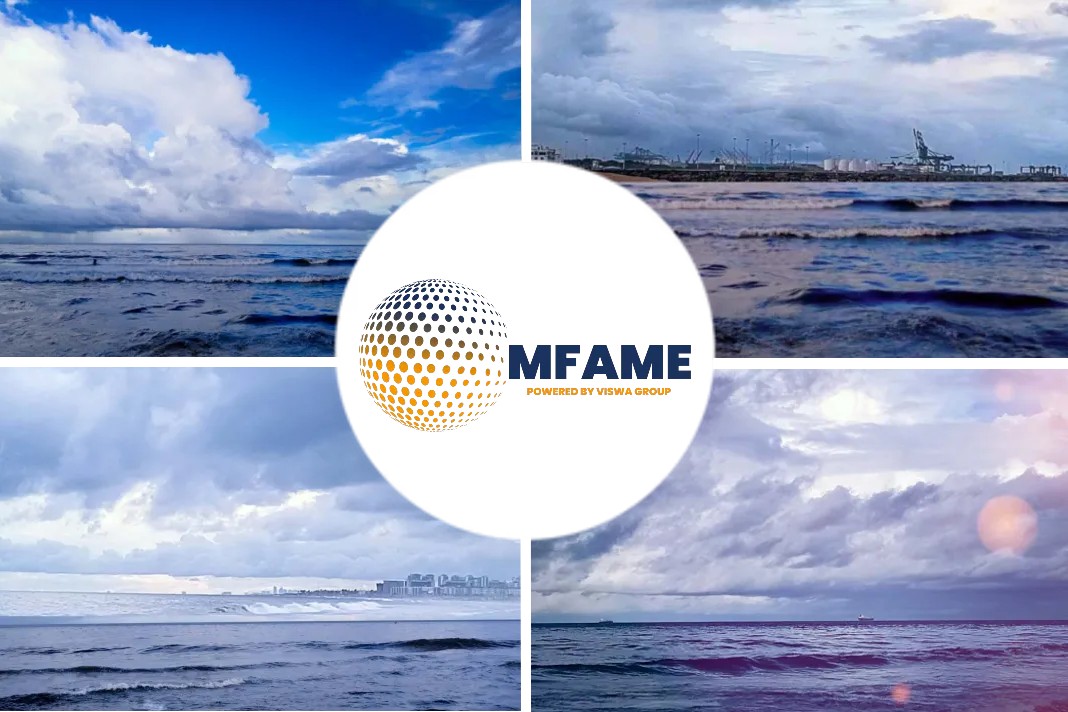
A high-stakes meeting at the U.N.’s maritime agency could set aggressive emissions-reduction goals for the dirty ships that keep the economy humming.
Climate Troubles
A parade of giant cargo ships streams through the Panama Canal on any given day. Vessels carrying containers of bananas, salt, wine and precious metals sail north from South America to the Atlantic Ocean. Tankers filled with U.S.-made petroleum products and liquefied natural gas head south toward the Pacific. Hundreds of millions of tons of goods transit this Central American gateway every year. An “unprecedented drought” is drying up the lakes and locks that carry ships through the 48-mile artificial waterway. Maersk, one of the world’s largest container shipping companies, has said the low water levels at the Panama Canal “are an example of the effects of climate change…which causes a ripple effect through the supply chain.”
Members of the International Maritime Organization (IMO) are meeting near the banks of the Thames River through July 7 to revisit their five-year-old climate strategy. The U.N. agency’s existing goals call for reducing annual shipping emissions by at least 50 percent from 2008 levels by 2050, while also working toward full decarbonization of the sector “as soon as possible within this century.” Climate advocates are calling on the IMO’s 175 member countries to dramatically ratchet up those targets, including by setting goals to halve shipping emissions by 2030 and achieve net-zero emissions as soon as 2040. Such benchmarks, they argue, would accelerate the adoption of low-carbon and zero-emissions fuels — including methanol, hydrogen and ammonia made from renewables — while also hastening the end of the diesel engine’s century-long reign over the high seas.
Emissions Heading The Wrong Direction
Scientists at the U.N. Intergovernmental Panel on Climate Change have warned that, in order to avert disastrous warming, the world will need to achieve “net-zero” carbon dioxide emissions by 2050. In order to do so, all sectors of the economy must make “immediate and deep emissions reductions” — starting yesterday. In 2015, the world adopted a landmark climate accord known as the Paris Agreement, which called for limiting global temperature rise to 1.5 degrees Celsius above pre-industrial levels. However, the agreement did not include pollution from international shipping and aviation; those industries were left to regulate themselves.
Two and a half years later, the IMO set its own climate targets, calling for a 50 percent emissions cut by midcentury. Delegates and climate advocates described the deal as both historic — given the shipping industry’s tradition of dragging its feet on environmental issues — and the “bare minimum” of what’s required to steer the shipping industry toward a cleaner course. A negotiator for the Marshall Islands likened the deal to reaching “first base” in a game of baseball. The IMO’s 2018 strategy is not legally binding. But in recent years, shipping regulators have adopted a series of mandatory short-term measures that require new and existing ships to meet energy-efficiency requirements and to improve their carbon-intensity.
Emerging Solutions
For all of its shortcomings, the IMO’s initial strategy has helped launch a wave of investments in cleaner shipping technologies in the last five years. It’s the beginning of what experts say will ultimately be a trillion-dollar, multidecade enterprise to clean up tens of thousands of merchant ships. That includes not only building new ships but also installing dramatically more wind, solar and other renewable energy sources to create the clean alternative fuels needed to power shipping’s transition.
Maersk and CMA CGM, two of the world’s top container shipping giants, have placed orders for dozens of vessels that can run on methanol. The common chemical can be used as an alternative “drop-in” fuel, and it doesn’t produce harmful soot or particulate matter when burned. Most of today’s methanol supplies are made using fossil gas. But if produced using renewables, methanol can sharply curb carbon dioxide emissions compared to using oil-based fuels — though it still emits some CO2 when burned.
Major ports around the world are starting to establish“green-fuel corridors” to boost the production and distribution of methanol, ammonia and other fuels at common destinations. In one such initiative, the ports in Shanghai and Los Angeles — the No. 1 and No. 17 busiest container hubs in the world, respectively — are developing plans to launch the first zero-carbon container ship to cross the Pacific Ocean by 2030.
“The first movers know the transition will happen,” said Marie Cabbia Hubatova, director of global shipping at the Environmental Defense Fund in London. “Many stakeholders are starting to realize that, the later the [shipping] sector moves, the more expensive it will be.”
Did you subscribe to our daily Newsletter?
It’s Free! Click here to Subscribe!
Source: Canarymedia





















